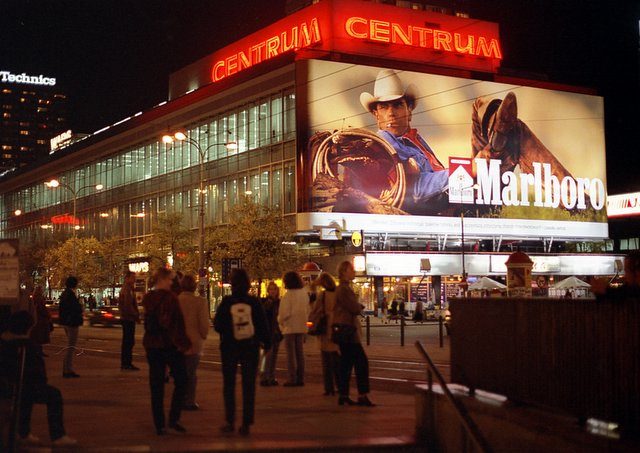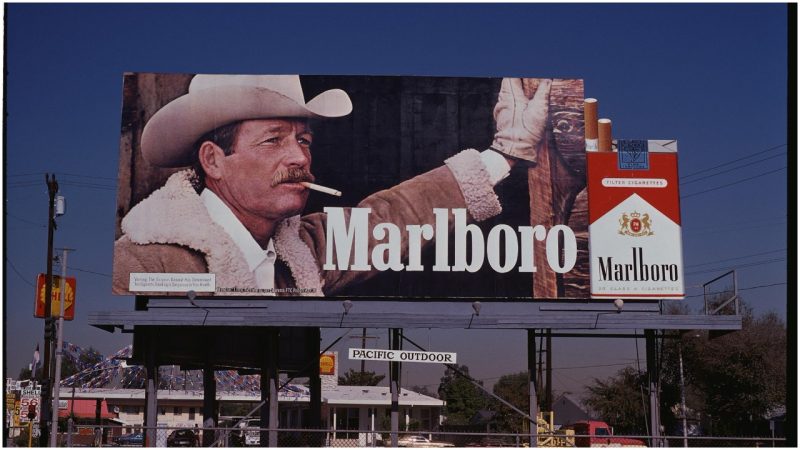The Marlboro Man—the rugged cowboy in his duster on a horse riding across rolling, lonesome plains—is perhaps the most indelible advertising icon ever created. He is so synonymous with the image of the macho American individualist out for a smoke that it’s hard to believe that before he was introduced to the public in the mid-1950s, Marlboro cigarettes were actually marketed to society women, with the limp slogan “Mild as May.”
In the early 1900s, cigarette smoking was on the rise, thanks to the invention of automated cigarette-making machines and plentiful crops in Southern states, and to the gradual relaxation of social mores as the Victorian era faded and Flappers came into vogue.
To the extent that cigarette smoking was frowned upon, it was not for health reasons—that wouldn’t make headlines for a few more decades—but because it was considered “unladylike.”
In 1908 in New York City, a group of concerned (male) politicians pushed through a measure to curtail the right of women to smoke in public. The Sullivan Ordinance prohibited owners of bars and restaurants to allow women to smoke on their premises. The law lasted only two weeks before the mayor vetoed the bill, but it did result in at least one arrest: An indignant Katie Mulcahey was reportedly jailed for a night after she refused to pay the $5 fine.

But as the women’s suffrage movement gained momentum and women won the right to vote in 1920, so too did they “win” the “right” to smoke. Indeed, cynical marketers used cigarettes as a symbol of emancipation.
When the president of the American Tobacco Company sensed an emerging profitable market—society women—he enlisted Ed Bernays, considered the father of public relations, to create a marketing campaign targeting them. For the Easter Sunday Parade of 1929, Bernays hired debutantes to march down Broadway smoking their “Torches of Freedom!”
“The whole idea that, ‘I can do this because it’s legal and I choose to,’ is very much in line with many American beliefs,” Pamela Ling, an associate professor of medicine at the University of California San Francisco, told Atlantic magazine in 2015. “Saying that, ‘I choose to smoke, and it’s an expression of my freedom,’ is something that, again, the companies have worked for a long time to reinforce, and it’s something that they know has resonance.”
Early Marlboro ads touted the product as “America’s luxury cigarette” and showed an illustration of a slim socialite in a backless gown, pearls, and arm-length red gloves kissing a photo of her handsome military-clad beau, presumably away at war. Marlboro hired Mae West to appear in ads. In one photo, a glamorous movie star poses in profile, her dark hair, dark eyebrows, and darkly painted lips holding a cigarette with a tipped filter and the slogan: “Ivory tips protect the lips.” Later the tip would be changed to red to hide unsightly lipstick stains.
In the 1950s, Philip Morris decided to pivot from women to a wealthier customer base with more expendable income—that is, young men. Doing so required a huge makeover. First the company redesigned the cigarette box with its hard flip-top cover. Then it hired the maverick Leo Burnett advertising firm to re-create the cigarette’s image.
To that end, Leo Burnett introduced the Marlboro Man in 1955. The wordless cowboy was an instant success: sales rocketed to over $5 billion, according to AdAge. The ad firm experimented with other manly icons—ball players, race-car drivers, tattooed guys—but the cowboy resonated. Even with the first reports of the direct link between lung cancer and cigarette smoking in 1957, Marlboro sales continued to climb.
Cigarette ads were banned from TV in 1971, but the image of the silent cowboy translated just fine to billboards and magazine ads.
Related story from us:”Viceroy” were the first ever cork tipped filter cigarettes
Despite the fact that several models hired to portray this iconic figure have died of lung disease, the Marlboro Man is credited with making it the most popular cigarette brand, a position it still holds today.
